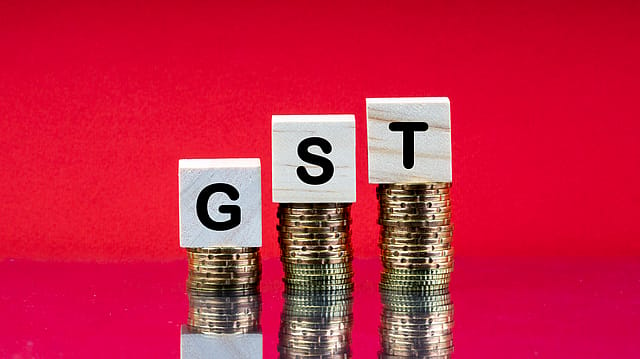SGST revenue of 6 biggest states up 19% in FY23
ADVERTISEMENT

State goods and services tax (SGST) revenue of six states which account for the maximum amount of GST collection shows the revenue has increased 19.27% in FY23.
As per the annual accounts data released by the Comptroller and Auditor General (CAG), the SGST collection by Maharashtra, Tamil Nadu, Gujarat, Karnataka, Uttar Pradesh and Rajasthan was ₹4.45 lakh crore against ₹3.73 lakh crore in the previous year.
Maharashtra has seen the maximum growth of 24.61% with total SGST collection of ₹1.21 lakh crore in FY23 against ₹97,304 crore in FY22.
"Maharashtra is a key state for domestic and foreign investments. The GST department has stepped up vigilance and cracked down on defaulters. The state's e-way bill generations for FY23 accounted for ₹15 crore which is an increase of 27% from the previous year. We are confident of increasing the GST revenue in the current financial year," says a senior Maharashtra Secretariat official.
He says in the current fiscal more investments as well as companies are expected to work at full capacity, leading to an increase in the revenue of the state government.
Among the six states, Uttar Pradesh is second in SGST collection. In FY23, the state collected ₹1.12 lakh crore, an increase of 11.70%.
January 2026
Netflix, which has been in India for a decade, has successfully struck a balance between high-class premium content and pricing that attracts a range of customers. Find out how the U.S. streaming giant evolved in India, plus an exclusive interview with CEO Ted Sarandos. Also read about the Best Investments for 2026, and how rising growth and easing inflation will come in handy for finance minister Nirmala Sitharaman as she prepares Budget 2026.
"UP is the biggest state by population. Though the SGST collection has crossed ₹1 lakh crore, the state can increase its SGST revenue if it increases the tax base. It also needs to woo more investments so that the tax revenue increases," says Madras School of Economics director K R Shanmugam.
Shanmugam also mentions that UP is one of the few states which receives the maximum amount of the Centre's tax share as per the recommendations of the Finance Commission. "In the 2022-23 financial year, UP has received ₹1.21 lakh crore which is more than its SGST collection, while states like Maharashtra, Tamil Nadu receive a lesser share of the Centre's collection," says Shanmugam.
Karnataka has collected ₹71,189 crore as SGST, which is 20.48% higher. Karnataka with a large number of IT companies has seen its SGST increase considerably from ₹59,087.35 crore FY22.
"The last financial year was the first year in which there was no Covid-19 lockdown and most of the manufacturing companies as well as information technology companies worked continuously for the entire year. Due to this the government revenue of all states have increased considerably," says Shanmugam.
Tamil Nadu has received a total of ₹53,822 crore in FY23, which is 18.87% more. Tamil Nadu and Andhra Pradesh are the two states which are more dependent on non-GST revenue for their total revenue. While Andhra Pradesh has 64%, Tamil Nadu has 61% of its own revenue coming from sales tax, excise, stamp duty and other sources while states like Maharashtra, Gujarat or Karnataka have lower dependence on non-GST revenue sources.
"There are both advantages and disadvantages for Tamil Nadu and Andhra Pradesh due to their dependence on non-GST revenue," says Prof N R Bhanumurthy of the New Delhi-based National Institute of Public Finance and Policy. "The two governments can increase or decrease the tax on liquor, fuel, property etc depending on the economic growth. Both these states have big industries and their revenue will depend on the economic growth."
Rajasthan has seen its GST revenue increase by 23%. In FY23, the SGST revenue was ₹33,790 crore against ₹27,501 crore in FY22. Similarly, Gujarat has seen an increase of 21.33% in 2022-23.
"In the present year, all states will see the SGST revenue increase by a larger percentage as the economy is expected to grow without any lockdown," says Shanmugam. Tamil Nadu is expected to increase its GST revenue as more investments have come into the state in the last year and many have commissioned their factories. "Tamil Nadu is a manufacturing state and we expect the companies to work round-the-clock as the demand for the products are likely to increase. We expect a 11% growth this year and therefore the GST revenue will also increase," says a senior finance department official.
